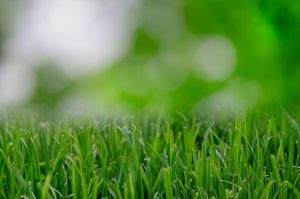
You’ve decided on installing new sod – great! It’s the easiest and fastest way to a beautiful lawn. When it’s time to have it installed, you want to take the correct steps to ensure its success, so you don’t have to start over. Sod is living, and if it isn’t properly handled or installed, it can die – something you certainly want to avoid.
Keep in mind that fall is the best time of year for your sod projects. So, now is the perfect time to start preparing!
Installing New Sod: Prior to Arrival
Before the sod arrives, you want to make sure the ground is ready. This means it is level – whether you tilled the ground or not, you want to make sure all holes are filled, weeds are pulled, and fertilizer is applied to create a uniform and prepared surface for the new sod to take root.
Make sure garden beds, paths, walkways, and driveway edges are prepared as well. They should allow the sod to sit level with them – not above. About an inch below the edge should create enough room for the fresh sod to line up next to any edge properly.
Have this work done ahead of time, because once the new sod is delivered, you will want to install it right away. The longer it sits, the more likely it is to dry out, scorch, and die.
Installing New Sod: Upon Arrival
If you have hired professional sod installers, they will roll out the sod and lay it in a brick pattern so all seams don’t line up in the same place. If you are doing it yourself, line up the seams on the short ends without overlapping them or allowing more than a half of an inch between them. Stagger the pattern, just like the professionals would.
Use a knife to cut the sod to fit curved areas so the sod butts up against them.
Installing New Sod: Installation Completed
Once all the sod has been rolled out, it should be saturated with water. This should be done within the first 30 minutes after installation, doing so prevents it from drying out. If you are covering a large area that will take more than 30 minutes to install, consider laying the sod in stages so you can properly water.
You shouldn’t be able to leave deep footprints when you walk across the sod, but it should be watered to a depth of about 4-6″. Water the new sod every day for one to two weeks. In the fall, when the weather is cooler, you may not have to water for as long or as often. Talk to your sod expert if you aren’t sure.
Roll the sod to help level it and encourage root growth. Roll the sod only once to eliminate gaps and air pockets. Avoid over-rolling it, or walking on the new sod for the first few weeks other than to water. You can check the soil under the sod by lifting a corner to make sure the soil isn’t too dry or muddy. Adjust the water levels as needed. The ground should be damp, not crumbly, or saturated.
New Sod Maintenance
After the critical first two weeks have passed, you can successfully mow your new lawn, if needed. Try to lift a corner of the sod, and if it doesn’t lift, it has rooted properly and will grow. Avoid applying weed killer, pesticides, or fertilizer until after you are sure the sod has rooted, or they can damage the process. Follow your sod expert’s advice for proper maintenance and care of the specific lawn you have chosen.
Caring for your sod doesn’t have to be hard, but using the right kind for your needs is important to keep it beautiful. Whether you are needing new sod, or support with sod care, contact Emerald Sod today to learn more about the best sod for Colorado, applications, pricing, and sod maintenance.
